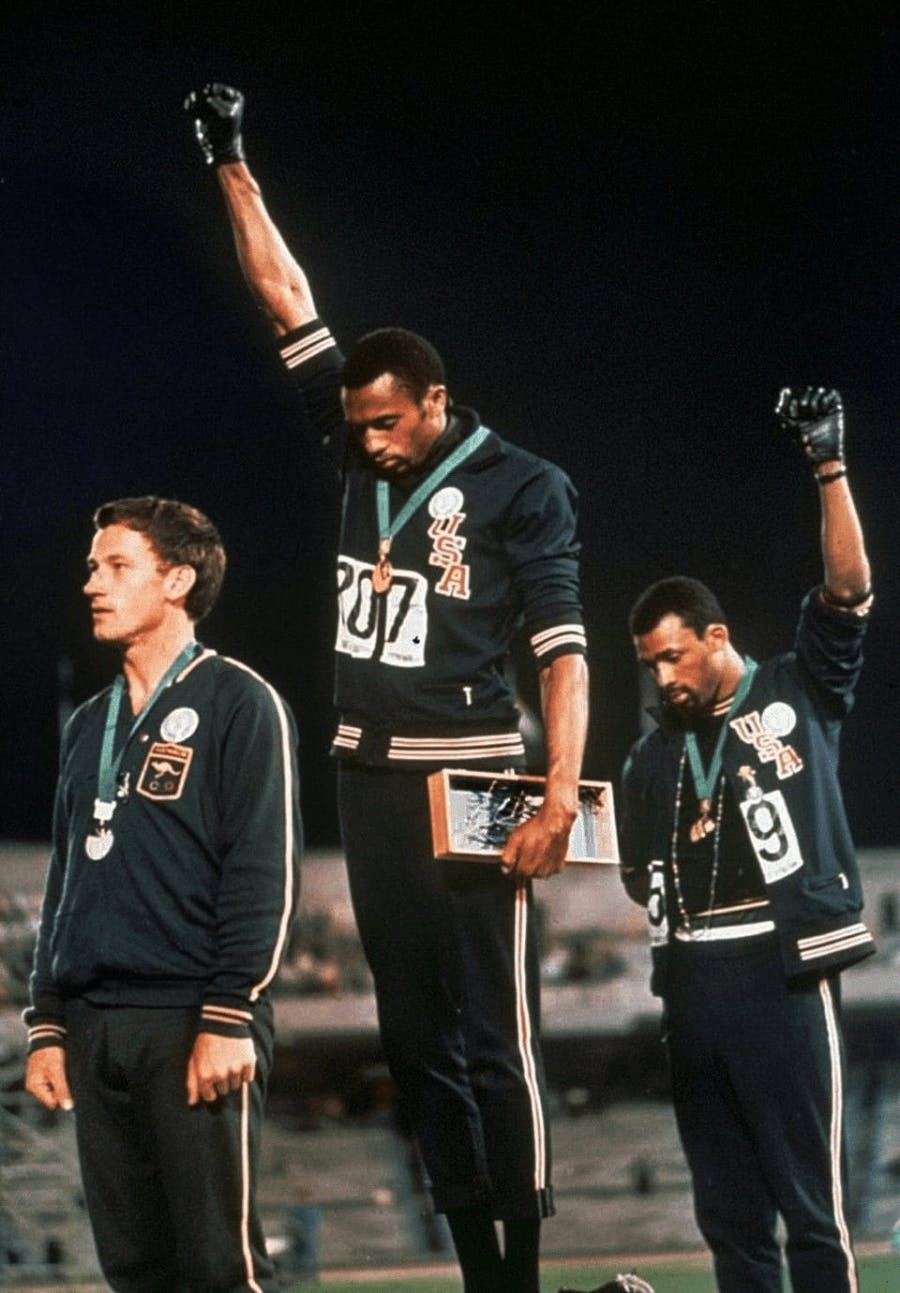A Brief History of the Raised Fist
The clenched, raised fist. You’ve seen it before—on television and in movies, on posters, in textbooks, maybe even in-person at a rally. As a gesture itself, it holds no meaning. But, throughout history, a variety of communities have used it as a symbol of resistance and unity: a simple yet demonstrative act of rebellion against institutional oppression.
Like many popularized symbols in history, the raised fist has had varied influences and uses that have shifted its meaning over time. Read on for an abbreviated history of the raised fist and how its significance has changed over time, just as our worldviews and global challenges have shifted and morphed.
An Early Instance: The Uprising
One early visualization of the raised, clenched fist was depicted by Honoré Daumier and was likely inspired by the Revolution of 1848 that saw the overthrow of King Louis-Philippe’s monarchy. Daumier, who was in Paris during the time known as the “Bloody June Days,” was moved by the intense passion of the people and used the raised fist as a symbol of their “strength, determination and will to fight.”

Fighting the Oppressor: The Spanish Civil War
Throughout the Spanish Civil War (1936-1939), Republican militias and international brigades used the raised fist as a symbol of anti-fascism. Infamous dictator Francisco Franco was viewed as a fascist leader by the Republicans, and using it basically meant that you were united in the fight against the oppressor.

Black Power Salute: The 1968 Olympics
The 1968 Olympics in Mexico City became the site of one of the most highly publicized (and criticized) uses of the raised fist. Months prior to the event, the United States was reeling from the assassination of Rev. Dr. Martin Luther King Jr. and the ongoing civil rights turmoil. Dr. Harry Edwards established his own organization, later becoming the Olympic project for Human Rights, whose goal was to protest racial segregation. American track athletes, Tommie Smith and John Carlos, were the first two athletes to join as they viewed the games as a critical platform to speak out from for better treatment of black athletes and black people around the world. When Smith and Carlos won gold and bronze respectively in the 200m dash, they raised their fists, protesting racism and injustice on the world stage. “We had to be seen because we couldn’t be heard,” said Smith. “I wanted to do something so powerful that it would reach the ends of the earth, and yet still be nonviolent,” Carlos explained.

The Feminist Movement: Miss America Protest
The feminist movement has also historically used the fist in the fight for gender equality. In the 1968 Miss America Protest, lead organizer Robin Morgan and supporters of the movement gathered to denounce the misogynistic representation of women as more than just bikini models in the Miss America Competition.

Finding Solidarity During Tragedy: LGBT Community
While advances in legislation for the LGBTQ community have improved their protection, they still face some of the most severe attacks for their identities. In 2016, the Orlando nightclub shooting killed 49 people, making it the deadliest attack against the community in history. Here, the raised fist is used as a symbol of standing strong and gathering together to fight for equality despite earth-shattering devastation.

Furthering the Fight for Gender Equality: Women’s March
In 2017, the raised fist as a symbol of activism saw renewed interest in the feminist movement in The Women’s March.* Women across the nation joined in protest of female oppression through nonviolent resistance. Held the day after President Trump was inaugurated, the march criticized the unjust and unequal treatment of women by political figures.

Over the last few years, the fist has garnered attention for its co-opted use by atypical individuals and groups—namely white nationalists at home and abroad. While the meaning of unity and solidarity has remained at the core, the reason for the solidarity had changed—it was no longer inclusive, but exclusive. It was no longer fighting for, but fighting against. It was no longer a rally cry for the oppressed, but for those oppressing.
Reclaiming the Clenched Fist: Black Lives Matter 2020
After the horrific death of George Floyd and countless other black men and women at the hands of the police, Black Lives Matter has brought the raised fist back to the forefront. It stands as a symbol of resistance and defiance. It says "We can no longer watch from the sidelines what is happening in our nation. We must raise our hands and voices until we force those who are blind to these injustices to acknowledge and protect us.”

Open Hands vs Clenched Fist? It's the TAKING ACTION That Counts.
We find the cultural context around this social symbol both interesting and relevant. Like so many things in our society, the imagery and language of paradigm shifts and revolution is fluid.
As an agency and as human beings, we honor the symbolism you are drawn to as it helps inform and communicate the work that you are doing for the community.
We choose the symbolism (and physical action) of open hands, as this best represents our feelings on remaining present in meaningful conversation and fostering community. We open our hands in the service and support of others, we open our hands to hard work, we open our hands because sometimes we need help ourselves, we open our hands in celebration of the community that surrounds us…
Thoughts welcome.
What important moments in history have we missed in the history of the raised fist? What has this symbol come to mean to you?
To activate around things that matter with us, sign up for our emails here.
*The Women’s March is meant to be intersectional and include women of all races, religions, sexualities—we do not agree with nor support the allegations of the national Women’s March organization’s antisemitism.